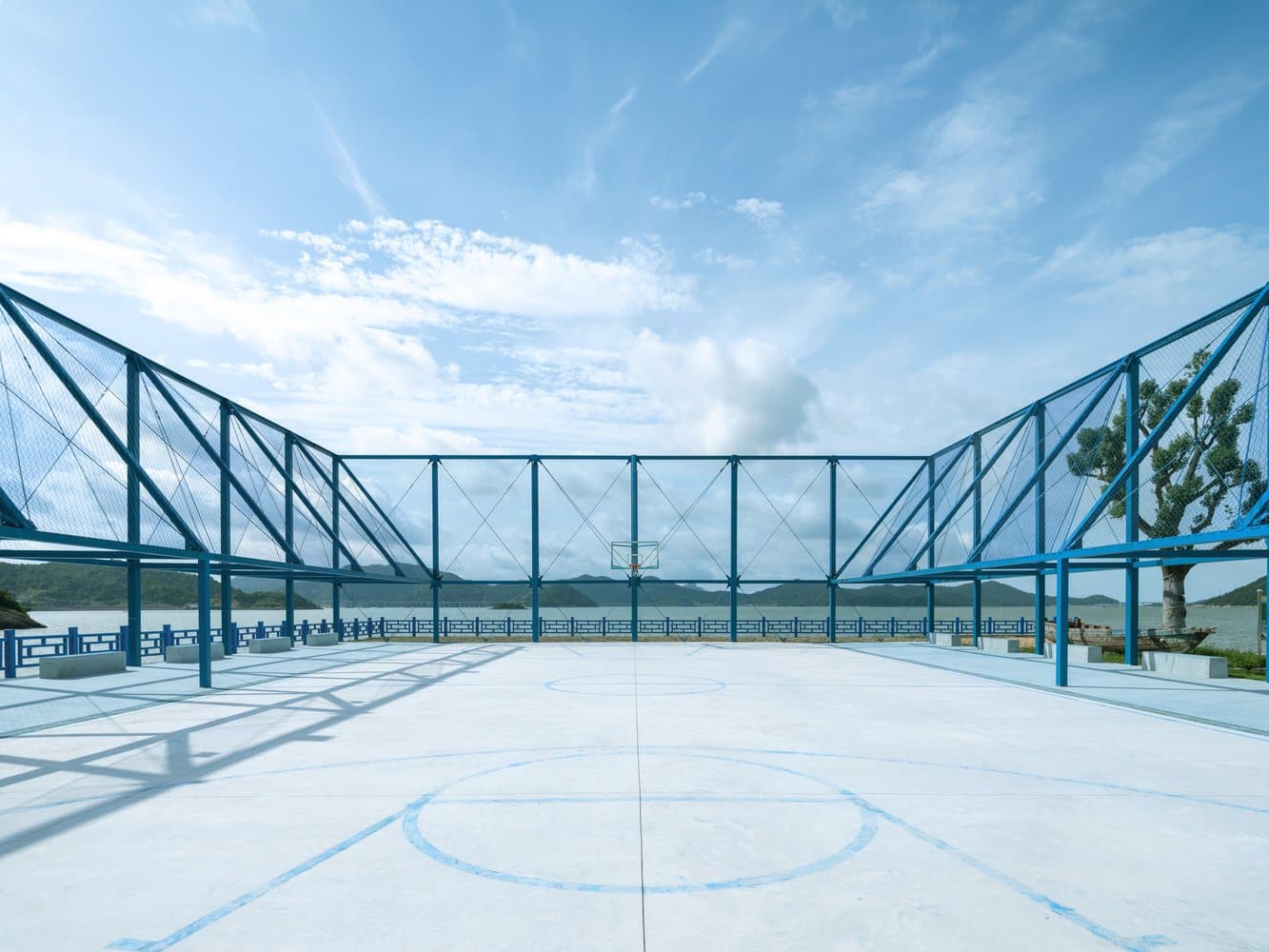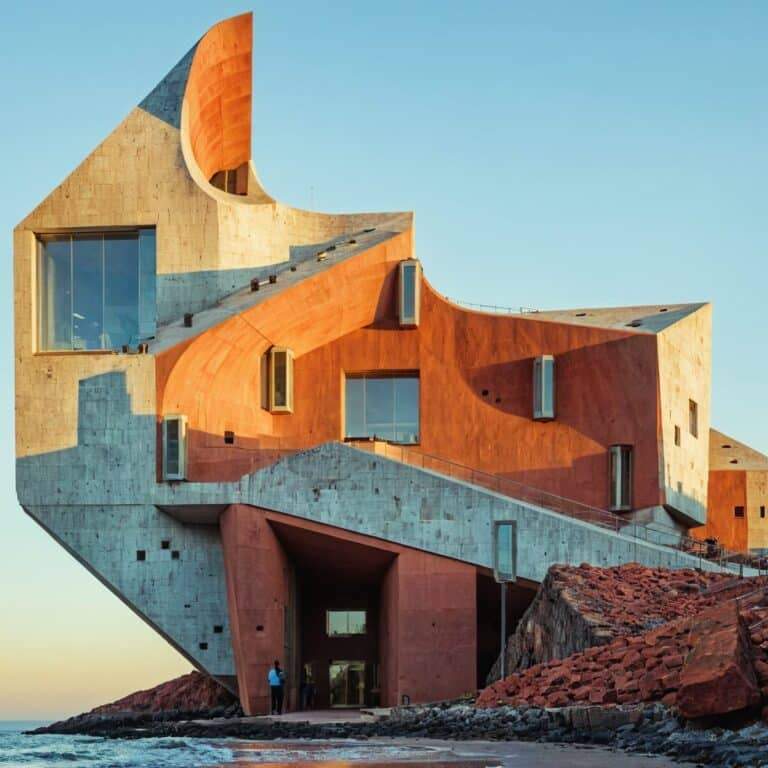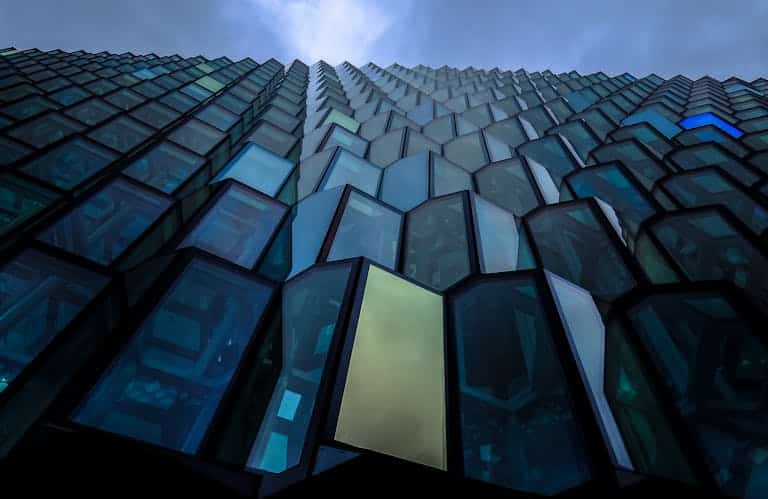A Deep Cylindrical Design for an Immersive Transit Experience
French studio Dominique Perrault Architecture has designed the Villejuif-Gustave Roussy metro station, an innovative underground transport hub that appears to sink into a deep cylindrical shaft. Topped with a transparent roof, the station allows natural light to flood its 50-metre-deep subterranean space.
Located in the southern suburb of Villejuif, this station is a key part of the Grand Paris Express, a major rapid transit project connecting the city’s outskirts.
A Sunken Architectural Marvel
Unlike traditional metro stations, Villejuif-Gustave Roussy does not feature an above-ground structure. Instead, it descends into a 70-metre-wide cylindrical shaft, making it one of France’s deepest infrastructure projects.
“The sky of this inverted skyscraper is simply the ground level of the city,” said Dominique Perrault. The station’s design ensures that natural light reaches the platform level, transforming the underground experience into a luminous and airy environment.
A Multi-Level Public Space
The station serves over 100,000 passengers daily and incorporates:
- Galleries and balconies linked by footbridges and escalators
- Shops and services on the first two levels
- Public spaces designed for accessibility and comfort
From street level, the station resembles a glass pavilion with a helicoidal glass roof made of three layers. The transparent lid allows passengers to see the sky from below, redefining perceptions of underground spaces.
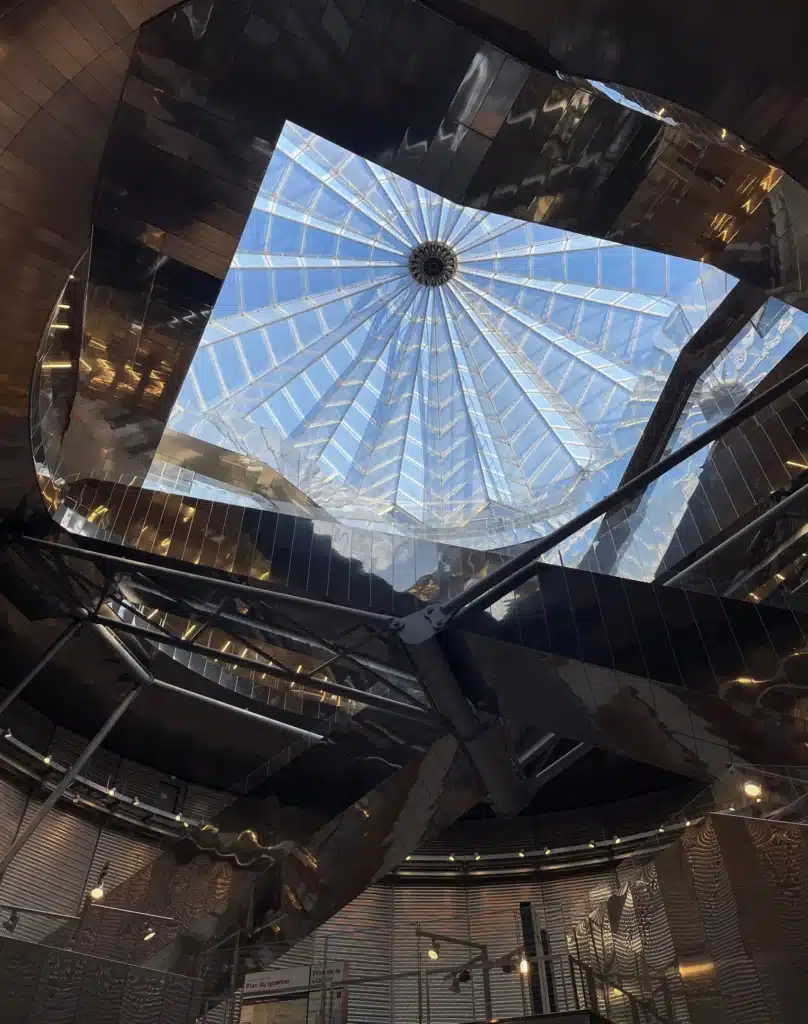
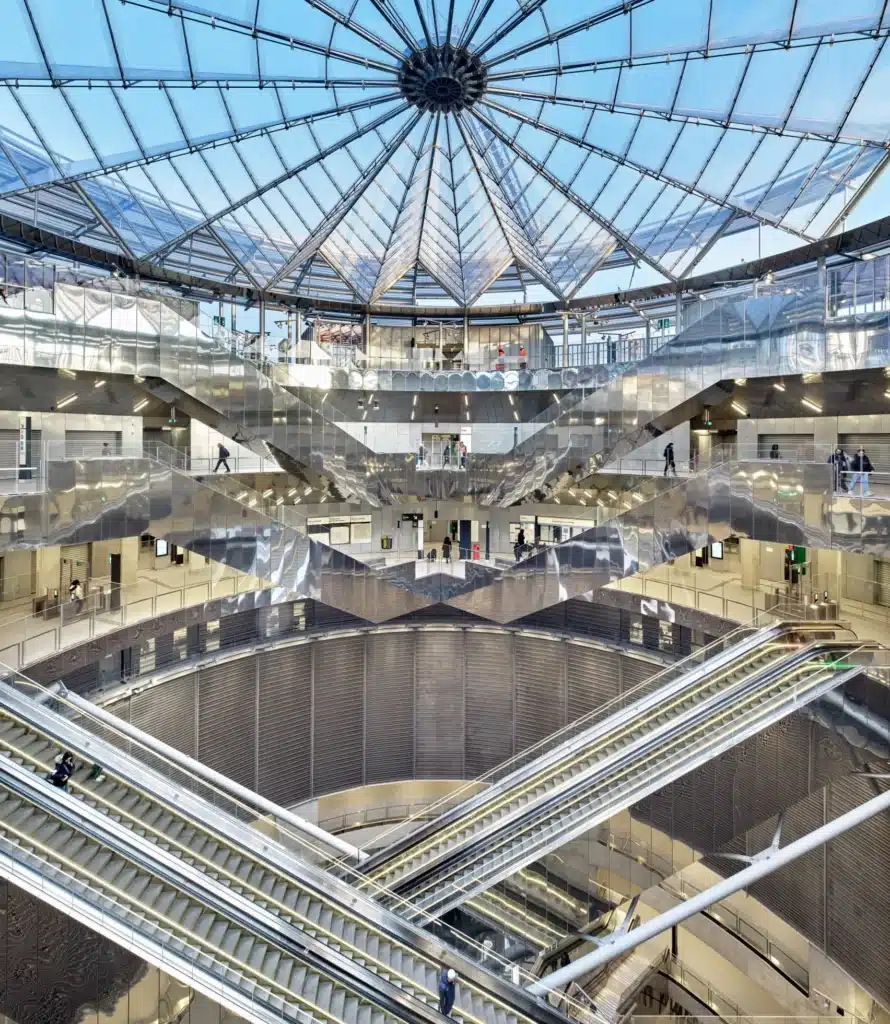
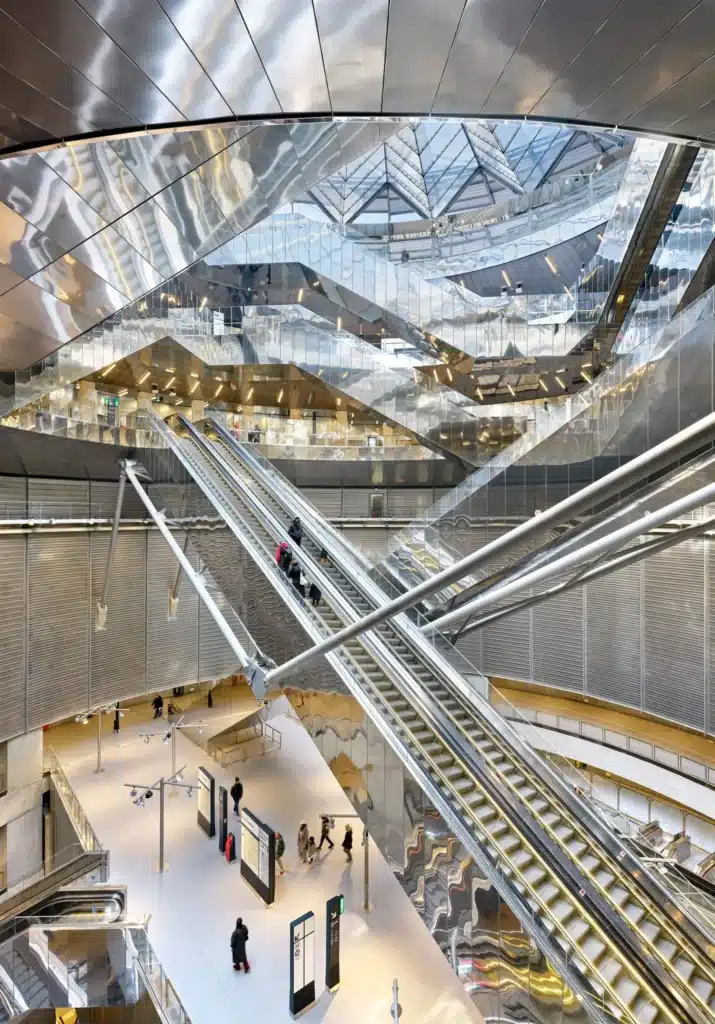
Innovative Roof Structure
The three-layered roof features a central hub, or “eye,” that enhances ventilation and illumination:
- A plastic central canopy shields the station from rain while enabling air circulation.
- Two additional stainless-steel mesh roofs, arranged at varying heights, act as protective marquees, offering shade and marking the station’s presence.
Materials and Sensory Experience
Designed by Gaëlle Lauriot-Prévost, the station’s interior prioritizes:
- Concrete, glass, and stainless steel in various textures
- Strategic lighting and acoustics for an enhanced commuter experience
- A starry neon sky installation by Chilean artist Iván Navarro, adding a cultural dimension
More on ArchUp:
Urban Connectivity and Social Impact
Positioned in the ZAC Campus Grand Parc, the station enhances connectivity to the Institut Gustave Roussy, a leading cancer research center. It is also a part of the broader Grand Paris Express, a 200-kilometre automated transit network with 68 new stations, aimed at:
- Reducing social inequality by improving transport links to disadvantaged areas
- Enhancing suburban-to-city access, with 42 stations near designated low-income zones
As part of a series of emblematic metro stations, Villejuif-Gustave Roussy joins other architecturally significant hubs like Kengo Kuma’s Saint-Denis Pleyel Station, further shaping the urban future of Greater Paris.
Photos: Michel Denancé


